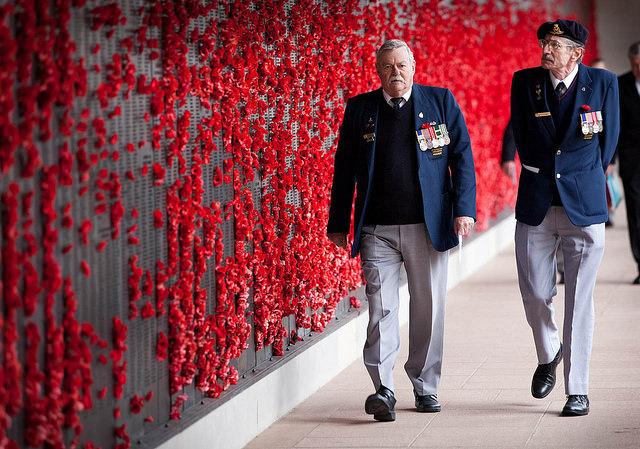Flanders poppies
A sketch of wild poppies growing in front of Mont Kemmel. Donated through the Australian Government's Cultural Gifts Program by the Macqueen family in 2009. C1236986
The Flanders poppy has long been a part of Remembrance Day, the ritual that marks the Armistice of 11 November 1918, and is also increasingly being used as part of Anzac Day observances. During the First World War, red poppies were among the first plants to spring up in the devastated battlefields of northern France and Belgium. In soldiers' folklore, the vivid red of the poppy came from the blood of their comrades soaking the ground. The sight of poppies on the battlefield at Ypres in 1915 moved Lieutenant Colonel John McCrae to write the poem In Flanders fields (see The recitation). In English literature of the nineteenth century, poppies had symbolised sleep or a state of oblivion; in the literature of the First World War a new, more powerful symbolism was attached to the poppy – the sacrifice of shed blood.
Moina Michael, who worked for the American YMCA, read McCrae's poem just before the Armistice. She was so moved by it that she wrote a poem in reply and decided to wear a red poppy always as a way of keeping faith, as McCrae had urged in his poem. At a meeting of YMCA secretaries from other countries, held in November 1918, she talked about the poem and her poppies. Anna Guérin, the French YMCA secretary, took the idea further by selling poppies to raise money for widows, orphans, and needy veterans and their families.
The poppy soon became widely accepted throughout the allied nations as the flower of remembrance to be worn on Armistice Day. The Australian Returned Soldiers and Sailors Imperial League (the forerunner to the RSL) first sold poppies for Armistice Day in 1921. For this drive, the league imported one million silk poppies, made in French orphanages. Each poppy was sold for a shilling: five pence was donated to a charity for French children, six pence went to the League's own welfare work, and one penny went to the League's national coffers. Today the RSL continues to sell poppies for Remembrance Day to raise funds for its welfare work.
The poppy has also become very popular in wreaths used on Anzac Day. An early instance took place in Palestine, where poppies grow abundantly in the spring. At the Dawn Service in 1940 each soldier dropped a poppy as he filed past the Stone of Remembrance. A senior Australian officer also a laid a wreath of poppies picked from the slopes of Mt Scopus.
Poppies adorn the panels of the Memorial's Roll of Honour, placed beside names as a small personal tribute to the memory of a particular person, or to any of the thousands of individuals commemorated there. This practice began at the interment of the Unknown Australian Soldier on 11 November 1993. As people waited to lay a single flower by his tomb in the Hall of Memory, they had to queue along the cloisters, beside the Roll of Honour. By the end of the day, hundreds of RSL poppies had been pushed into the cracks between the panels bearing the names of the fallen.

Poppies on the Roll of Honour. Photograph taken by Kerry Alchin. PAIU2014/128.14
